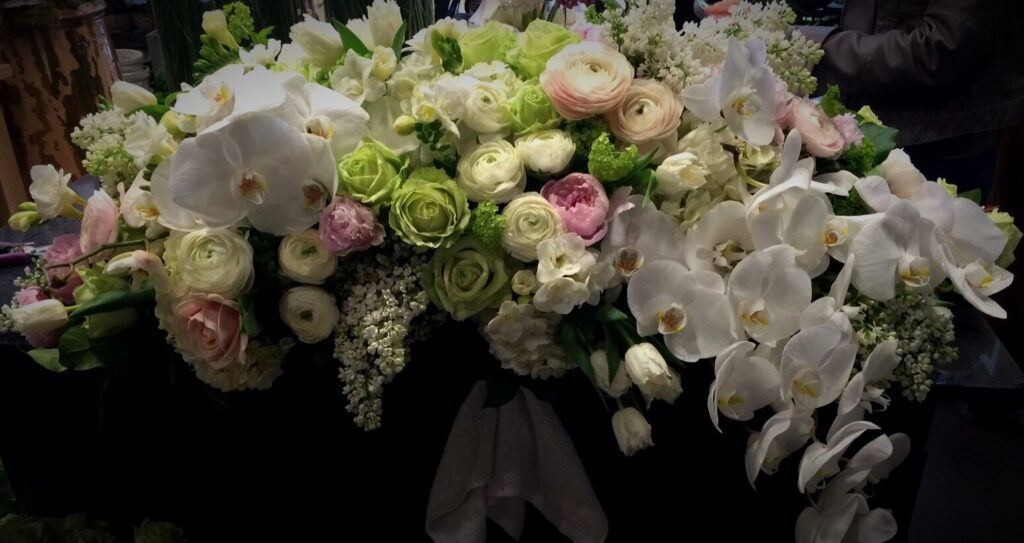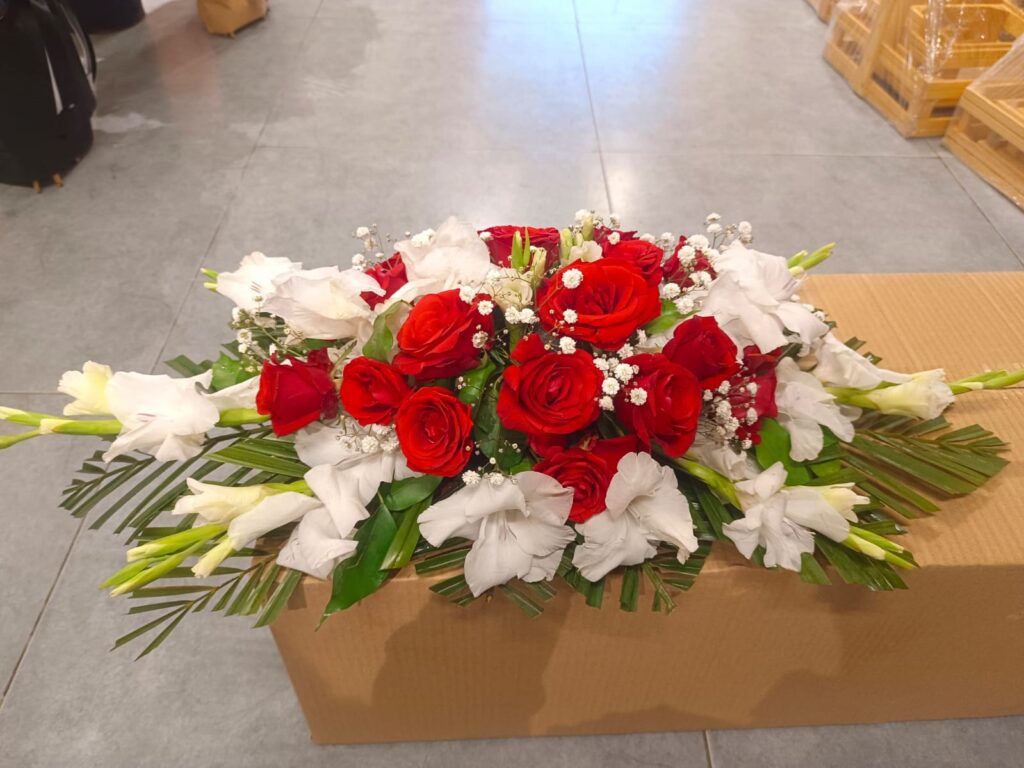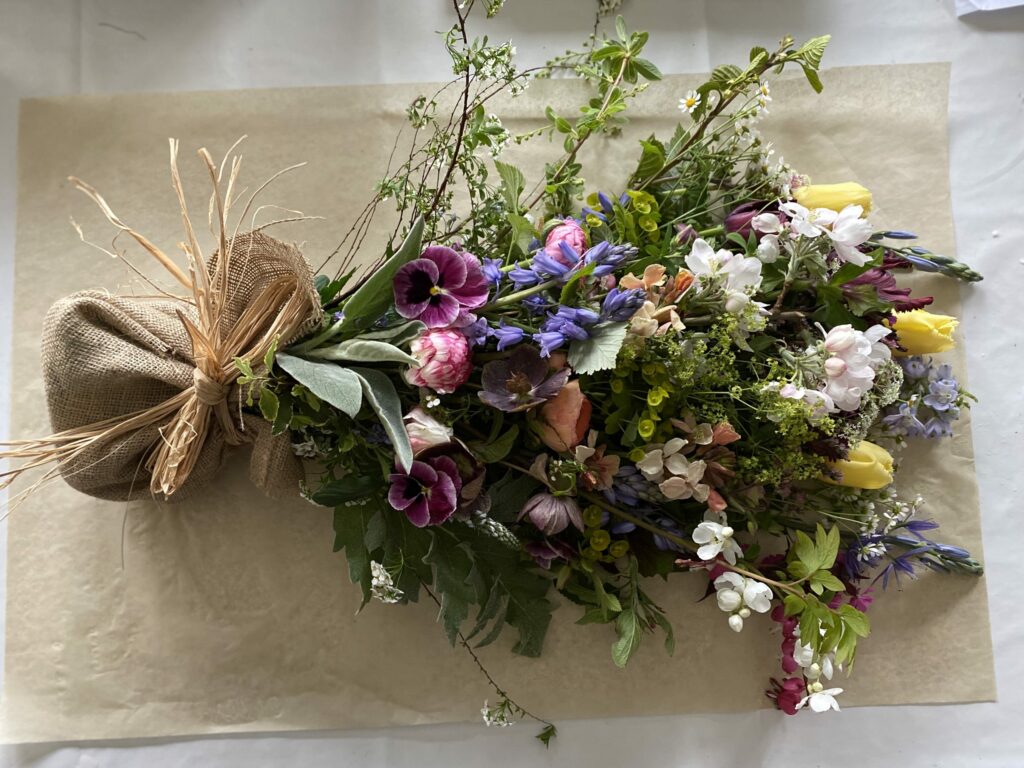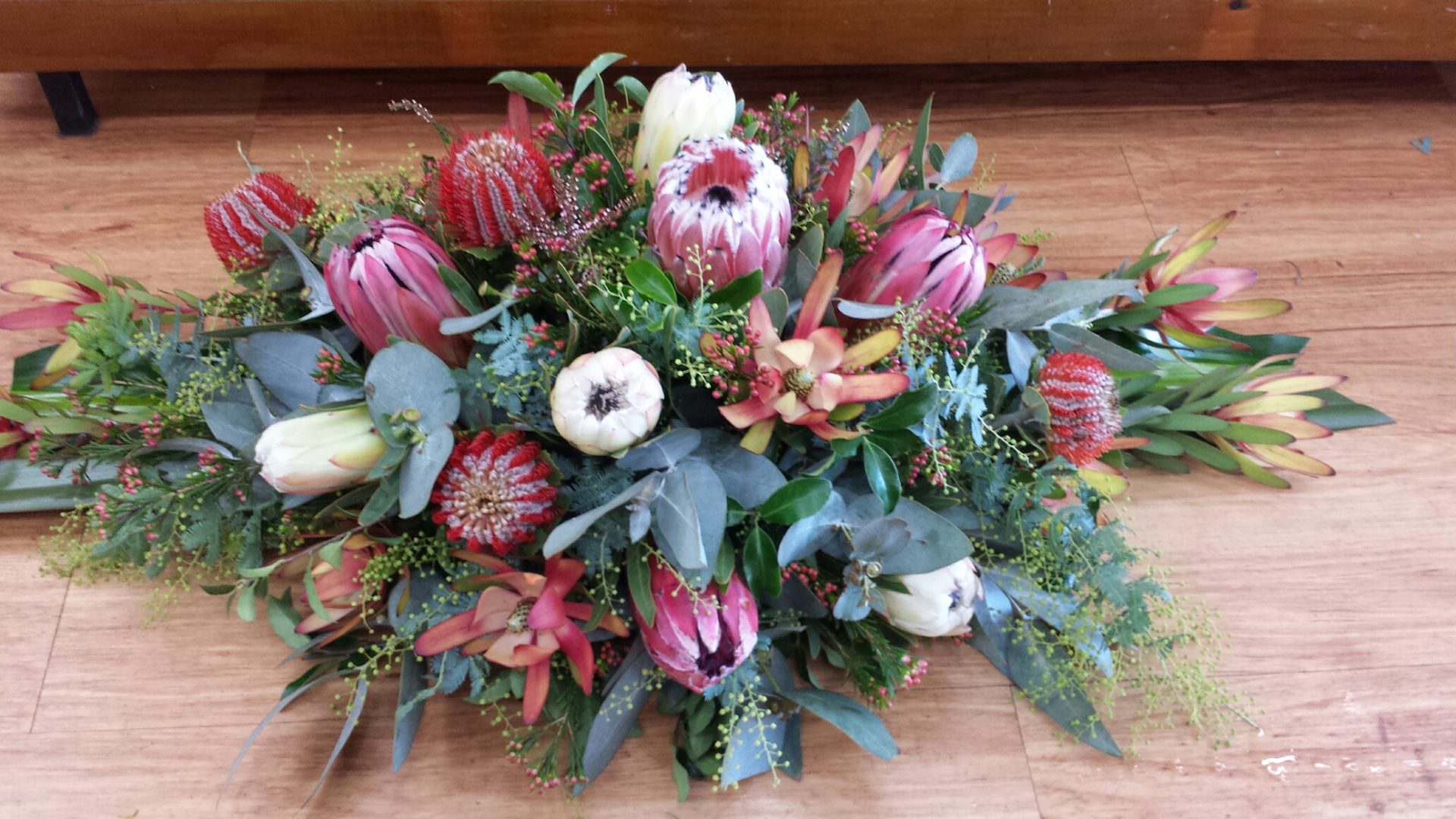Flowers have long played a significant role in various cultures and traditions to commemorate the deceased and honor their memory. Funerals, in particular, have been closely associated with the presence of blooming blossoms, each with its own symbolism and significance. This article aims to delve into the history, language, cultural variations, and modern trends surrounding funeral flowers, offering insights into their rich meaning and the emotions they convey.
The History and Tradition of Funeral Flowers
Funeral flowers have a deep-rooted history, dating back to ancient civilizations. Throughout time, different cultures have developed unique customs and practices concerning these floral tributes, infusing a sense of spirituality and reverence into the act of farewell.
Ancient Customs and Funeral Flowers
In ancient times, funeral flowers delivery held great importance and were believed to have profound spiritual significance. They were used to honor the departed and provide comfort to grieving loved ones. Ancient Egyptians, for example, believed that flowers, especially lilies and roses, were associated with life, death, and rebirth.
The ancient Egyptians had a complex belief system centered around the afterlife. They believed that when a person died, their soul would embark on a perilous journey through the underworld. To ensure a safe passage, the deceased would be buried with various items, including funeral flowers. These flowers were seen as offerings to the gods, who would then guide the soul to its final resting place.
Similarly, in ancient Greece, funeral flowers played a significant role in honoring the deceased. The Greeks believed that flowers had the power to ease the transition from life to death and bring comfort to the grieving. Floral wreaths were commonly placed on tombs as a symbol of remembrance and respect. These wreaths were often made with olive branches, which were considered sacred and represented peace and eternal life.
See Also: Expressing Gratitude with Exquisite Mothers Day Flowers Arrangement

Evolution of Funeral Flower Traditions
Over the centuries, funeral flower traditions have evolved, reflecting changing beliefs and cultural practices. From floral wreaths adorning tombs in ancient Greece to elaborate flower arrangements prevalent during the Victorian era, these tributes have had a transformative journey. Today, funeral flowers serve as a means of expressing condolences and honoring the deceased in a uniquely personal way.
During the Victorian era, funeral flower arrangements became more elaborate and intricate. The Victorians had a strong fascination with symbolism, and every flower had a specific meaning. Funeral arrangements were carefully crafted to convey messages of love, remembrance, and mourning. Flowers such as lilies symbolized purity and innocence, while roses represented love and beauty. The language of flowers became a way to express emotions that words could not adequately convey.
In modern times, funeral flowers continue to hold deep significance. They provide a tangible expression of sympathy and support to the bereaved. Different cultures have their own customs and preferences when it comes to funeral flowers. In some cultures, white flowers are preferred as they symbolize purity and peace, while in others, colorful and vibrant arrangements are chosen to celebrate the life of the departed.
Funeral flowers also play a role in the healing process. They create a serene and comforting atmosphere during the funeral service, offering solace to those in mourning. The sight and scent of flowers can evoke memories and emotions, providing a sense of connection to the deceased.
Furthermore, funeral flowers have expanded beyond traditional arrangements. Personalized tributes, such as floral wreaths shaped like sports equipment, musical instruments, or hobbies, have become popular. These unique arrangements celebrate the individuality and passions of the departed, creating a truly meaningful farewell.
The Language of Funeral Flowers
Funeral flowers communicate emotions and sentiments that may be difficult to express in words alone. A subtle and eloquent language has developed around the selection and arrangement of blossoms, enabling individuals to convey their feelings towards the departed and offer solace to those mourning their loss.
When it comes to selecting the right flowers for a funeral, it is important to consider the symbolism attached to each bloom. Each flower carries its own significance, representing various emotions and virtues. For instance, white lilies symbolize purity and innocence, making them a popular choice for funeral arrangements. Their delicate petals and sweet fragrance bring a sense of peace and serenity to the atmosphere, providing comfort to grieving hearts.
Roses, with their diverse colors, can convey sentiments ranging from love and respect to remembrance and gratitude. The red rose, often associated with love and passion, can express deep affection for the departed. On the other hand, yellow roses symbolize friendship and can be a beautiful way to honor a cherished friend who has passed away. White roses, similar to white lilies, represent purity and innocence, while pink roses symbolize grace and appreciation.
Symbolism of Different Blooms
While lilies and roses are commonly used in funeral arrangements, there are many other blooms that hold special meanings. Carnations, for example, are often included in funeral tributes due to their long-lasting nature and their association with love and admiration. Chrysanthemums, with their vibrant colors and intricate petals, are a symbol of honor and loyalty, making them a popular choice for memorial services.
Orchids, with their exotic beauty, represent eternal love and are often used to pay tribute to someone who has left a lasting impact on the lives of others. Their elegant and graceful appearance adds a touch of sophistication to any arrangement. Sunflowers, with their bright and cheerful demeanor, can bring a sense of warmth and positivity to a funeral, symbolizing adoration and loyalty.

Color Significance in Funeral Flowers
In addition to the individual symbolism of blooms, the colors chosen for funeral flowers also hold significance. White flowers are commonly associated with purity and condolences, representing the innocence of the departed and offering comfort to those grieving. They bring a sense of peace and tranquility to the atmosphere, creating a serene environment for remembrance.
Red flowers, on the other hand, may symbolize love and passion. They can be used to express deep affection for the deceased, conveying a strong emotional connection. The vibrant and bold nature of red blooms can serve as a reminder of the love shared and the impact the departed had on the lives of others.
Yellow flowers, such as sunflowers or yellow roses, can symbolize friendship and bring a sense of joy and happiness to a funeral. They serve as a reminder of the cherished moments and the bond shared with the departed. Pink flowers, with their soft and delicate hues, can represent grace and appreciation, expressing gratitude for the life lived and the memories created.
By carefully selecting the right flowers and colors for a funeral arrangement, individuals can create a meaningful tribute that not only honors the departed but also offers solace and support to those mourning their loss. The language of funeral flowers is a beautiful way to convey emotions and sentiments, providing comfort during a time of grief and remembrance.
Cultural Variations in Funeral Flowers
While funeral flowers have a universal purpose of honoring the deceased, different cultures have their own unique traditions and customs surrounding these floral tributes. Exploring these cultural variations provides a broader understanding of how flowers have become an integral part of the farewell process.
Funeral Flowers in Eastern Cultures
In many Eastern cultures, such as Japan and China, funeral flowers hold deep spiritual significance. Chrysanthemums are commonly used in these regions, symbolizing grief and are reserved exclusively for funerals. The chrysanthemum, known as “kiku” in Japanese, is associated with death and is often seen as a symbol of the afterlife. It is believed that the petals of the chrysanthemum represent the perfection of the soul. In China, the chrysanthemum is associated with longevity and is considered a sacred flower. The use of chrysanthemums in Eastern funeral rituals reflects the cultural beliefs surrounding death and the journey of the soul.
In contrast, lotus flowers are associated with rebirth and renewal and often feature prominently in Eastern funeral rituals. The lotus is highly revered in Buddhism and is seen as a symbol of purity and enlightenment. It is believed that the lotus flower emerges from the muddy waters to bloom, representing the journey of the soul from darkness to light. In Eastern funeral ceremonies, lotus flowers are used to convey the idea of the deceased’s transition to a higher state of being.

Funeral Flowers in Western Cultures
Western funeral flower customs have also undergone their own evolution. In Europe and North America, the selection and arrangement of funeral flowers have become highly personalized, representing the individuality and memories shared with the deceased. The use of specific flowers and their arrangement can convey a range of emotions and sentiments.
Wreaths, sprays, and floral tributes shaped into specific symbols often feature in Western funeral ceremonies. Wreaths, typically made of evergreen branches, symbolize eternal life and are often placed on the casket or displayed at the funeral service. Sprays, on the other hand, are arrangements of flowers that are displayed on stands or easels. These arrangements can be customized to reflect the deceased’s favorite flowers or colors, creating a personalized tribute.
Floral tributes shaped into specific symbols hold great significance in Western funeral customs. For example, a heart-shaped arrangement can represent love and affection, while a cross-shaped arrangement can symbolize faith and spirituality. These symbolic arrangements not only pay tribute to the deceased but also provide comfort and support to the grieving family and friends.
As funeral flower customs continue to evolve, they remain an essential part of the grieving process across cultures. Whether it is the spiritual symbolism of chrysanthemums in Eastern cultures or the personalized arrangements in Western cultures, funeral flowers serve as a tangible expression of love, respect, and remembrance for the departed.
Modern Trends in Funeral Flowers
As times change, so do the trends surrounding funeral flowers. Today, people are embracing new ways to customize floral tributes, ensuring a meaningful and personal farewell for their loved ones.
Personalized Floral Tributes
Modern trends include personalized floral tributes that reflect the interests, passions, or hobbies of the deceased. For example, a nature lover may have their farewell adorned with arrangements featuring wildflowers or ferns, while a musician may be honored with floral arrangements shaped like musical instruments.
Eco-Friendly Funeral Flower Choices
With an increasing awareness of environmental impact, eco-friendly funeral flower choices are gaining popularity. Biodegradable options made from natural materials, such as bamboo or recycled paper, are being used to create eco-conscious floral arrangements that celebrate life while minimizing harm to the environment.
How to Choose Appropriate Funeral Flowers
When selecting funeral flowers, several factors should be considered to ensure that the chosen blooms convey the intended sentiments and provide solace to those grieving.
Factors to Consider When Choosing Funeral Flowers
The relationship with the deceased, religious or cultural customs, and the personality or preferences of the individual being honored are all critical factors to consider when choosing appropriate funeral flowers. Thoughtful consideration should also be given to the bereaved, the venue, and the overall tone and significance of the funeral service.
Tips for Conveying Sympathy with Flowers
While grief is a deeply personal experience, offering sympathy through funeral flowers can provide comfort and support to those left behind. Considerations such as sending flowers directly to the family, selecting arrangements with subtle colors and soothing scents, and accompanying the floral tribute with a heartfelt message can all help convey sympathy effectively.
In conclusion, funeral flowers hold immense significance in various cultures and traditions. Their vibrant blooms and symbolic meanings provide a unique way to honor the departed and offer solace to grieving loved ones. By understanding the history, language, cultural variations, and modern trends surrounding funeral flowers, we can gain deeper insights into the profound impact of these floral tributes during times of loss and sorrow.

